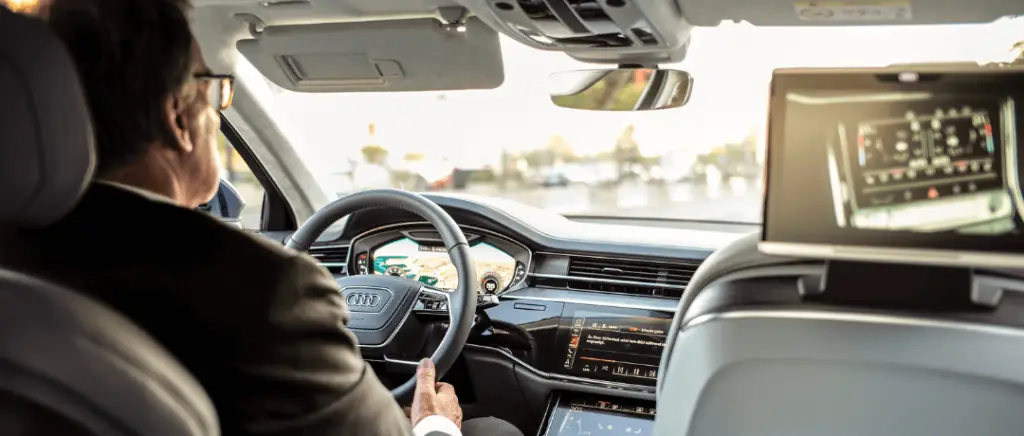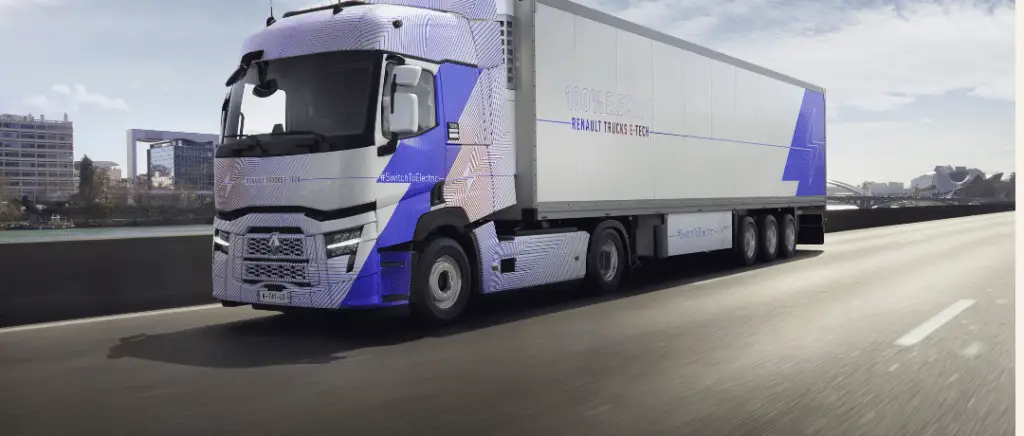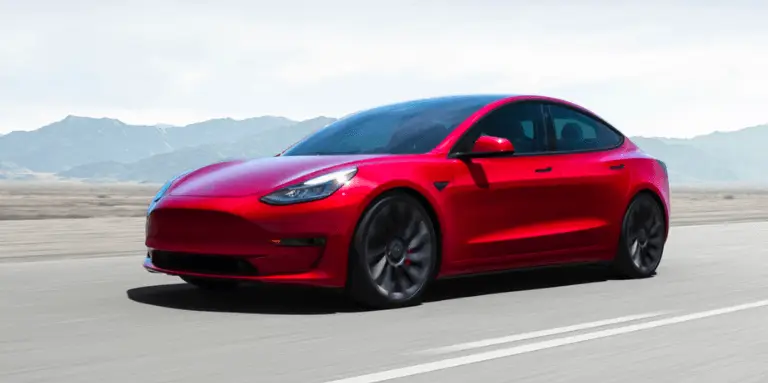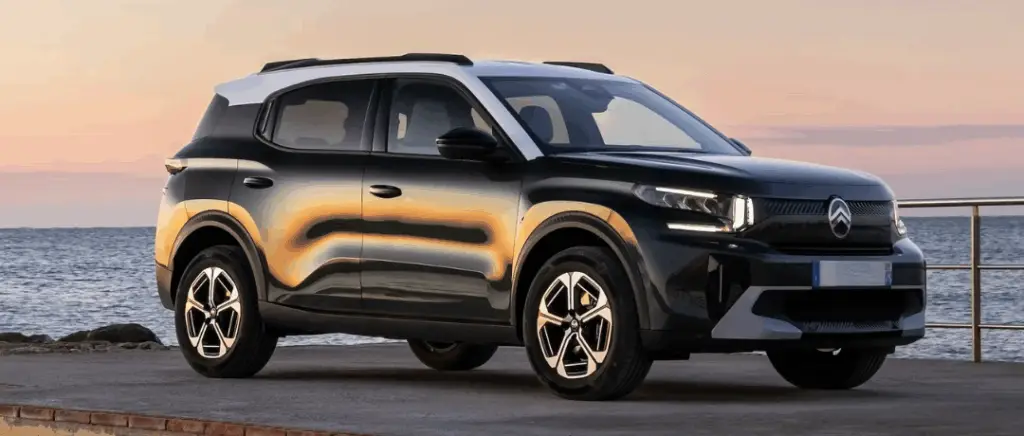What is non-deductible depreciation?
Non-deductible depreciation (NDA) refers to a portion of the depreciation of a vehicle that the tax authorities do not allow to be deducted from the company's taxable income. This rule applies equally to companies subject to corporation tax (IS) than companies in the BA (agricultural profits), BIC (industrial and commercial profits) or BNC (non-commercial profits).
In other words, part of the book depreciation cannot be used to reduce your company's tax base and is added extra-accountably to the annual tax return. They must be entered on the WE 2058-A declaration for companies subject toIS or theIR in category BIC. For those covered by theIR in category BNCis carried forward to the line 36 of form 2035-B.
The main aim of this measure is to limit tax benefits for "luxury" or overpriced vehicles.
For passenger vehicles, including electric carsdepreciation is subject to a specific ceiling. This means that although electric vehicles benefit from a more favourable tax treatment compared with combustion vehiclesHowever, there is a ceiling above which depreciation can no longer be deducted.
The purpose of this rule is toregulate the deductibility of vehiclesparticularly those whose acquisition cost exceeds a certain thresholdThis will enable companies to benefit from certain tax advantages linked to the energy transition.
See also our article :
What is a passenger car?
On the other hand, the term "private passenger vehicle" is precisely defined by tax law. According to this definition, a private passenger vehicle is :
- A vehicle for the passenger transport.
- Counting at maximum 9 seatsincluding driver.
- Not being not intended for use utility (for example, vans and other vehicles used exclusively for transporting goods).
See also our article :
This category mainly covers passenger cars, whether they are thermal or electricalincluding saloons, SUVs and MPVs. As part of your fleet management, it is important to identify passenger vehicles correctly in order to apply the tax rules on depreciation correctly.
💡Did you know ? To identify a passenger car, you need to refer to field J.1 of the vehicle registration document. If it says "PC" (Private Passenger Vehicle), it is a passenger vehicle.
See also our article :
As a fleet manager, understanding non-deductible depreciation and the definition of a passenger vehicle has a number of advantages. direct repercussions on your strategic decisions :
- Choice of vehicles :
- Deductible depreciation ceilings can influence the type of vehicles you select for your fleet. If the purchase price of a vehicle exceeds certain thresholds, the tax deduction will be partial, which may affect the total cost of ownership (TCO) of these vehicles.
- Budgeting :
- It is essential toinclude the non-deductible portion of depreciation in your calculations to establish a realistic budget and optimise the profitability of the fleet. For a fleet of 10 vehicles similar to the example above, the additional annual tax burden would be 50 000 € (10 x 5 000 €).
- Tax optimisation :
- By mastering these rules, you can adapt the structure of your electric fleet for maximising tax benefits while complying with legal constraints. For example, for electric vehicles, the cost of the battery can be written off in full, with no upper limit, which represents a significant tax advantage.
See also our article :
Use the TCO simulator to calculate the total cost of ownership of your car and compare it with its internal combustion equivalent.
By understanding and applying these principles, you will be better prepared to manage your passenger vehicles effectively, particularly electric vehicles, by combining performance economic and tax compliance.
See also our article :
💡Did you know ? It is possible to reclaim VAT at 100 % for electric vehicles!
See also our article :
Vehicles affected by non-deductible depreciation
As a reminder, a passenger vehicle is defined as a vehicle intended primarily for passenger transportwith a maximum of 9 seats, driver included. However, commercial vehicles such as vans, used exclusively for professional purposes (transporting goods), are not considered to be passenger vehicles and must be registered as such. escape non-deductible depreciation.
To find out more classification is defined by Article L. 421-2 of the French Tax Code on Goods and Services and includes :
- The vehicles of category M1 on their vehicle registration document
- (with the exception of "special use" vehicles)
- The vehicles of category N1 used for passenger transport
There are several notable exceptions, and some vehicles are exempt from these regulations:
- The vehicles put into circulation before 1 June 2004
- Vehicles essential to the company's main business, such as :
- Taxis
- Vehiclesdriving schools
- Vehicles rental companies
In addition, the tax regime applied to passenger vehicles also extends to rental contracts of more than 3 months and leasing. This extension of the scale has major implications for companies opting for these financing methods.
As a result, for vehicles in Professional LLD or leasingIn this case, the lessee company must make a tax adjustment. This involves :
- Identify the portion of the rent corresponding to non-deductible depreciation applied by the lessor
- Reintegrate this share into the company's taxable income
- The lessor's obligation to provide information
To facilitate this process, the lessor or the leasing company is obliged to provide a annual statement detailing the proportion of rent that is tax-deductible. This document is essential for :
- ensure tax compliance of the tenant company,
- and enable precise calculation of the tax-deductible expense.
See also our article :
⚠️ Points of attention for chartered accountants When a vehicle is sold, the The calculation of capital gains or losses must take account of all depreciation booked in the past.including the part that is not tax-deductible. This nuance is crucial for accurate accounting and tax management.
💡Special cases :
- The electric vehicle batteries can be written off in full if they arebilled separatelywithout being subject to the vehicle's depreciation ceiling.
- Le calculation of non-deductible depreciation on used vehicles is based on the redemption price and thevehicle agewith an adjusted amortisation period.
See also our article :
The tax scale applicable to DNAs in 2025: what impact will it have on companies?
As briefly stated above, the legislation has put in place deductible depreciation ceilings up to a certain threshold that varies according to of its CO₂ emissions. For a fleet manager or accountant, understanding these thresholds is crucial in order to optimising the profitability of a vehicle fleet and avoid additional tax costs.
For electric vehicles, the the ceiling for deductible depreciation is set at €30,000 since 1st January 2021. This threshold applies to vehicles emitting less than 20 g/km of CO₂This includes all 100% electric vehicles.
If your company buys an electric vehicle for €35,000 excluding VAT :
- Deductible depreciation : 30 000 €
- Non-deductible depreciation : 5 000 €
To summarise, here are the different depreciation ceilings depending on the vehicle's emissions:
| Plafond d'amortissement déductible (€) | Critères d'émissions de CO₂ (g/km) |
|---|---|
|
30 000 €
|
≤ 20
|
|
20 300 €
|
≥ 20 and ≤ 49
|
|
18 300 €
|
≥ 50 and ≤ 160
|
|
9 900 €
|
> 160
|
How is non-deductible depreciation (NDA) calculated?
Suppose your company buys the electric saloon Kia EV6 for a list price of €53,690. The maximumdeductible depreciation for this type of vehicle is €30,000. In this case :
- Deductible depreciation will be limited to €30,000
- The non-deductible portion will be €25,000 (€55,000 - €30,000)
Over a depreciation period of 5 years, this means that each year :
- 6,000 will be deductible (€30,000 / 5 years)
- 5,000 will not be deductible (€25,000 / 5 years)
Take the example of electric saloon Kia EV6 to illustrate the calculation of non-deductible depreciation for electric vehicles.
Data required for the calculation :
- List price for the Kia EV6 : 53 690 €
- Deductible depreciation ceiling for electric vehicles : 30 000 €
- Amortisation period : 5 years
Basic formula for calculating the non-deductible portion :
(Acquisition price - Ceiling) / Acquisition price
Stage 1 Calculation of the non-deductible portion of the purchase price
(53,690 - 30,000) / 53,690 = 0.4412 or 44.12%
Step 2 Calculating the annual depreciation charge
53 690 / 5 = 10 738 €
Step 3 Calculation of the non-deductible portion of the annual grant
Formula: Annual allocation x [(Acquisition price - Ceiling) / Acquisition price].
→ 10 738 x [(53 690 - 30 000) / 53 690] = 4 738 €
Amount deductible annually: 10,738 - 4,738 = 1,000,000 6 000 €
Non-deductible amount to be added back for tax purposes each year : 4 738 €
In short, of the €10,738 in annual book depreciation, only 6,000 will be tax deductible. The the remaining €4,738 must be added back to the company's taxable income each year during the vehicle's depreciation period.
The risks of mismanaging non-deductible depreciation for fleet managers and accountants
The non-deductible depreciation of passenger cars represents a major tax issue for companies. For fleet managers and accountants, it is essential to put in place effective strategies in order to limit the financial impact of this restriction andoptimising fleet profitability. Here are a number of levers you can use to control these costs more effectively.
Anticipate the tax impact as soon as you buy your vehicle
One of the main levers for optimisation is to include the ceiling on deductible depreciation in the vehicle selection criteria from the outset. As a reminder, since 2021 this ceiling has been set at 30,000 for electric vehicles emitting less than 20 g/km of CO₂.
Here are a few best practices:
- Compare list prices the models envisaged and give priority to those whose acquisition cost remains below the €30,000 threshold HT.
- Negotiating with dealers to reduce the purchase price of vehicles exceeding this ceiling.
Separate purchase of the battery and the vehicle
In the case of electric vehicles, the battery is a significant part of the total price. However, if it is invoiced separately, it can be fully amortised. with no fiscal limitunlike the rest of the vehicle.
Here are a few best practices:
- Opt for models offering battery hire or separate purchase.
- Demand a itemised billing mentioning the price of the battery separately.
- Check that this item has been correctly taken into account in the accounting entries.
Leasing for a better spread of costs
The long-term rental (LLD) and leasing can be alternatives to minimise the impact of non-deductible depreciation. However, rents include a non-deductible portion that must be identified and added back for tax purposes.
See also our article :
Here are a few best practices:
- Ask the lessor for a annual statement detailing the proportion of rent that is not tax-deductible.
- Comparing costs between buying and leasing to determine the most advantageous solution in terms of TCO.
- Optimise the duration of contracts to align rents with the company's financial policy.
Discover our exclusive offers
Carrying out rigorous monitoring and anticipating tax reintegration
Non-deductible depreciation must be added back to the company's taxable income. A poor management can lead to errors in tax returns and costly adjustments.
Here are a few best practices:
- Ensuring tax watch to anticipate changes in deductibility thresholds.
- Incorporate tax reintegration into fleet profitability calculations from the outset.
- Check that the amounts on the line WE of the 2058-A return (for corporate income tax or personal income tax in the case of BIC) or on the line 36 of form 2035-B (for BNC).
Conclusion: optimised management for controlled taxation
The non-deductible depreciation of electric passenger vehicles is a key parameter to take into account when managing your vehicle fleet. For fleet managers and accountants, this is not just a tax constraint, but also a lever for financial optimisation.
A strategic approach, including choice of vehiclesthe battery separation, l'optimising leasing contracts and a rigorous monitoring of tax reintegrationsThis will limit the impact of these restrictions and improve the company's overall profitability.
By incorporating these best practices, you will not only ensure the your company's compliance with current regulationsbut also a better control of TCO of your vehicles.
Optimising the management of your electric fleet is not just a matter of understanding the tax system: it is essential to choose the right vehicles, to take advantage of the better buying conditions and fundingand control costs over the long term. This is precisely where Beev intervene. Thanks to our expertise and our network of partners, we can help you help you choosethe funding and theoptimising your fleet in particular thanks to our fleet manager for maximise your tax and financial benefits.
Monday to Friday
9am - 12.30pm - 2pm - 7pm









































